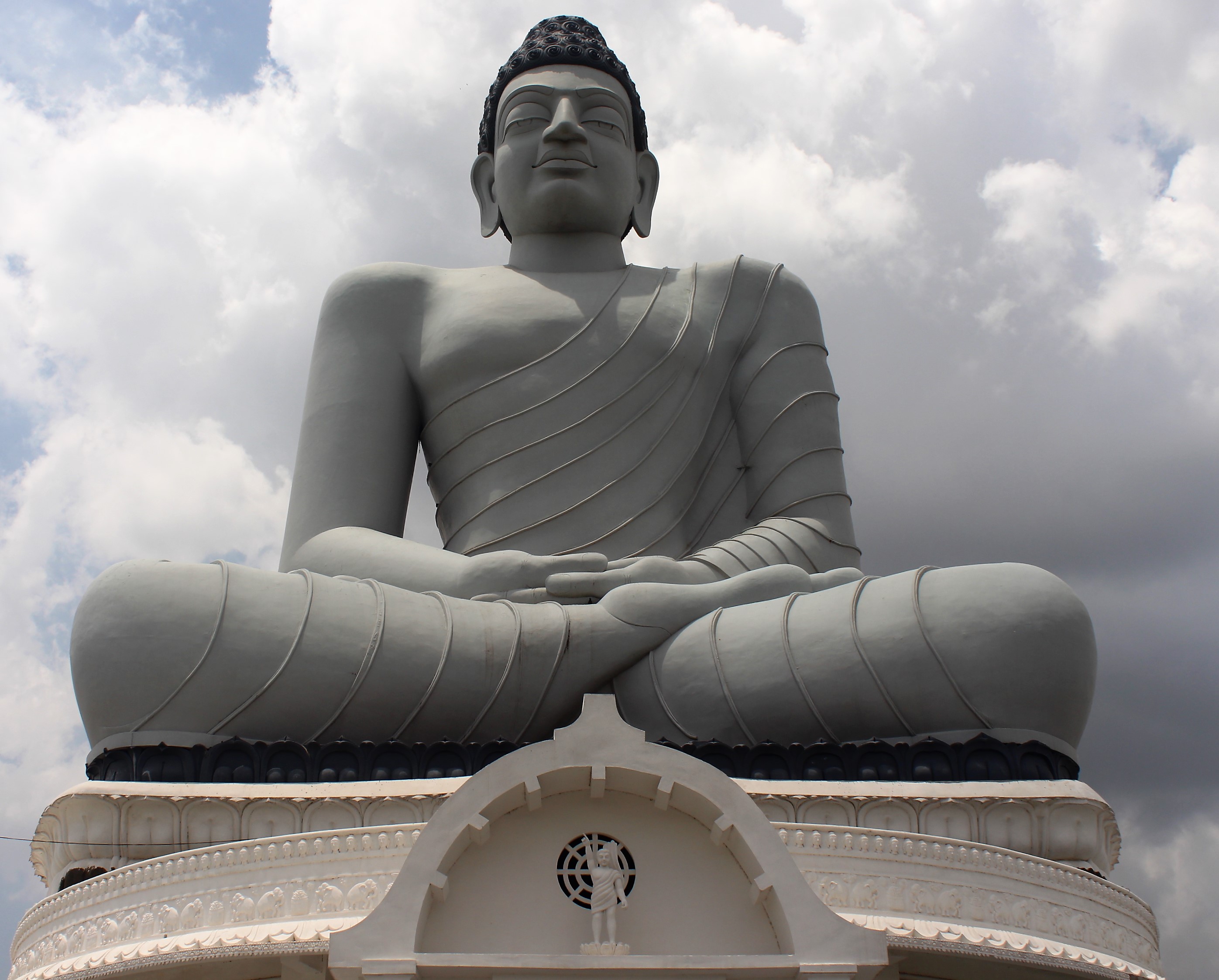|
Vibhaṅga
The is a Buddhist scripture, part of the Pali Canon of Theravada Buddhism, where it is included in the Abhidhamma Pitaka. One known English translation is contained in ''The Book of Analysis'', first published in 1969.tr U Thittila, 1969/1988, Pali Text Society Bristol The book has eighteen chapters, and each deals with a particular topic: # aggregate ('' khandha'') # sense bases ('' āyatana'') # elements (''dhātu'') # (''sacca'' ... [...More Info...] [...Related Items...] OR: [Wikipedia] [Google] [Baidu] |
Satipatthana
''Satipatthana'' ( pi, Satipaṭṭhāna, italic=yes; sa, smṛtyupasthāna, italic=yes) is a central practice in the Buddha's teachings, meaning "the establishment of mindfulness" or "presence of mindfulness", or alternatively "foundations of mindfulness", aiding the development of a wholesome state of mind. In Theravada Buddhism, applying mindful attention to four domains, the body, feelings, the mind, and key principles or categories of the Buddha's teaching ( ''dhammās''), is thought to aid the elimination of the five hindrances and the development of the seven aspects of wakefulness. The ''Satipatthana Sutta'' is probably the most influential meditation text in modern Theravada Buddhism,Sujato (2012), pp. 1–2. on which the teachings of the Vipassana movement are based. While these teachings are found in all Buddhist traditions, modern Theravada Buddhism and the Vipassana Movement are known especially for promoting the practice of satipaṭṭhāna as developing mindfuln ... [...More Info...] [...Related Items...] OR: [Wikipedia] [Google] [Baidu] |
Thittila
Ashin Thittila or Seṭṭhilābhivaṃsa ( my, အရှင် သေဋ္ဌိလ (သို့) သေဋ္ဌိလာဘိဝံသ; ; pi, ), commonly known as U Thittila, was a Burmese Theravada Buddhist monk, who was also a distinguished and brilliant scholar of Buddhist literature (Pariyatti) and meditation teacher (Patipatta). He is said to be the first religious worker among the Burmese monks left for a foreign country to do Buddhist missionary work by living there for long years, to be exact, 14 consecutive years in England. He served as a lecturer on Buddhist philosophy known as Abhidhamma at Yangon University, the University of Yangon, took part in compiling the Myanmar English Dictionary, Burmese-English dictionary, jointly working with Dr. Hla Pe, and wrote a few books in English and Myanmar. He is the one who translated Vibhaṅga, the second part of Abhidhamma Pitaka, from Pali to English for the first time. He also worked as a librarian at Adyar Library of ... [...More Info...] [...Related Items...] OR: [Wikipedia] [Google] [Baidu] |
Sutta Pitaka
Sutta may refer to: *Sutta Nipata, is a Buddhist scripture *Sutta Piṭaka, The second of the three divisions of the Tripitaka or Pali Canon *Sutta Pazham, is a 2008 Indian Tamil language adult comedy thriller film *Sutta Kadhai, 2013 Indian Tamil-language black comedy film *The Pali version of the Sanskrit term Sutra *In Buddhism, a discourse of the Buddha: see Sutra and List of suttas {{disambiguation ... [...More Info...] [...Related Items...] OR: [Wikipedia] [Google] [Baidu] |
Dhamma
Dharma (; sa, धर्म, dharma, ; pi, dhamma, italic=yes) is a key concept with multiple meanings in Indian religions, such as Hinduism, Buddhism, Jainism, Sikhism and others. Although there is no direct single-word translation for ''dharma'' in European languages, it is commonly translated as "righteousness", "merit" or "religious and moral duties" governing individual conduct.Britannica, The Editors of Encyclopaedia. (9 April 2019)Dharma. ''Encyclopedia Britannica''. Accessed 14 September 2021. In Hinduism, dharma is one of the four components of the ''Puruṣārtha'', the aims of life, and signifies behaviours that are considered to be in accord with '' Ṛta'', the order that makes life and universe possible. It includes duties, rights, laws, conduct, virtues and "right way of living".see: *"Dharma", ''The Columbia Encyclopedia'', 6th Ed. (2013), Columbia University Press, Gale, ; *Steven Rosen (2006), Essential Hinduism, Praeger, , Chapter 3. It had a transtempora ... [...More Info...] [...Related Items...] OR: [Wikipedia] [Google] [Baidu] |
Five Precepts
The Five precepts ( sa, pañcaśīla, italic=yes; pi, pañcasīla, italic=yes) or five rules of training ( sa, pañcaśikṣapada, italic=yes; pi, pañcasikkhapada, italic=yes) is the most important system of morality for Buddhist lay people. They constitute the basic code of ethics to be respected by lay followers of Buddhism. The precepts are commitments to abstain from killing living beings, stealing, sexual misconduct, lying and intoxication. Within the Buddhist doctrine, they are meant to develop mind and character to make progress on the path to enlightenment. They are sometimes referred to as the ''Śrāvakayāna precepts'' in the Mahāyāna tradition, contrasting them with the ''bodhisattva'' precepts. The five precepts form the basis of several parts of Buddhist doctrine, both lay and monastic. With regard to their fundamental role in Buddhist ethics, they have been compared with the ten commandments in Abrahamic religions or the ethical codes of Confucianism. Th ... [...More Info...] [...Related Items...] OR: [Wikipedia] [Google] [Baidu] |
Brahmavihara
The ''brahmavihārās'' (sublime attitudes, lit. "abodes of brahma") are a series of four Buddhism, Buddhist virtues and the meditation practices made to cultivate them. They are also known as the four immeasurables (Sanskrit: अप्रमाण, ''apramāṇa'', Pali, Pāli: अप्पमञ्ञा, ''appamaññā'') or four infinite minds (Chinese language, Chinese: 四無量心). The ''Brahma-viharas'' are: # Mettā, loving-kindness or benevolence (maitrī/mettā) # Karuṇā, compassion (karuṇā) # Muditā, empathetic joy (muditā) # Upekkhā, equanimity (upekṣā/upekkhā) According to the ''Metta Sutta'', cultivation of the four immeasurables has the power to cause the practitioner to be reborn into a "Brahmā (Buddhism), Brahma realm" (Pāli: ''Brahmaloka''). Etymology and translations * Pāli: ''cattāri brahmavihārā'' * sa, चत्वारो ब्रह्मविहाराः (International Alphabet of Sanskrit Transliteration, IAST: ') * , (Wy ... [...More Info...] [...Related Items...] OR: [Wikipedia] [Google] [Baidu] |
Jhana
In the oldest texts of Buddhism, ''dhyāna'' () or ''jhāna'' () is a component of the training of the mind (''bhavana''), commonly translated as meditation, to withdraw the mind from the automatic responses to sense-impressions, "burn up" the defilements, and leading to a "state of perfect equanimity and awareness ('' upekkhā-sati- parisuddhi'')." ''Dhyāna'' may have been the core practice of pre-sectarian Buddhism, in combination with several related practices which together lead to perfected mindfulness and detachment. In the later commentarial tradition, which has survived in present-day Theravāda, ''dhyāna'' is equated with "concentration", a state of one-pointed absorption in which there is a diminished awareness of the surroundings. In the contemporary Theravāda-based Vipassana movement, this absorbed state of mind is regarded as unnecessary and even non-beneficial for the first stage of awakening, which has to be reached by mindfulness of the body and ''vipassan� ... [...More Info...] [...Related Items...] OR: [Wikipedia] [Google] [Baidu] |
Noble Eightfold Path
The Noble Eightfold Path (Pali: ; Sanskrit: ) is an early summary of the path of Buddhist practices leading to liberation from samsara, the painful cycle of rebirth, in the form of nirvana. The Eightfold Path consists of eight practices: right view, right resolve, right speech, right conduct, right livelihood, right effort, right mindfulness, and right ''samadhi'' ('meditative absorption or union'; alternatively, equanimous meditative awareness). In early Buddhism, these practices started with understanding that the body-mind works in a corrupted way (right view), followed by entering the Buddhist path of self-observance, self-restraint, and cultivating kindness and compassion; and culminating in ''dhyana'' or ''samadhi'', which reinforces these practices for the development of the body-mind. In later Buddhism, insight ('' prajñā'') became the central soteriological instrument, leading to a different concept and structure of the path, in which the "goal" of the Buddhist pa ... [...More Info...] [...Related Items...] OR: [Wikipedia] [Google] [Baidu] |
Bojjhanga
In Buddhism, the Seven Factors of Awakening (Pali: ''satta bojjhagā'' or ''satta sambojjhagā''; Skt.: ''sapta bodhyanga'') are: * Mindfulness (''sati'', Sanskrit ''smrti''). To maintain awareness of reality, in particular the teachings (''dhamma''). * Investigation of the nature of reality (''dhamma vicaya'', Skt. ''dharmapravicaya''). * Energy ('' viriya'', Skt. ''vīrya'') also determination, effort * Joy or rapture (''pīti'', Skt. ''prīti'') * Relaxation or tranquility (''passaddhi'', Skt. prashrabdhi) of both body and mind * Concentration (''samādhi'') a calm, one-pointed state of mind, or "bringing the buried latencies or ''samskaras'' into full view" * Equanimity ('' upekkha'', Skt. ''upekshā''). To accept reality as-it-is (''yathā-bhuta'') without craving or aversion. This evaluation of seven awakening factors is one of the "Seven Sets" of "Awakening-related states" ('' bodhipakkhiyadhamma''). The Pali word ''bojjhanga'' is a compound of ''bodhi'' ("awakening," ... [...More Info...] [...Related Items...] OR: [Wikipedia] [Google] [Baidu] |
Iddhipada
''Iddhipāda'' (Pali; Skt. ''ddhipāda'') is a compound term composed of "power" or "potency" (''iddhi''; ''ddhi'') and "base," "basis" or "constituent" (''pāda''). In Buddhism, the "power" referred to by this compound term is a group of spiritual powers. Thus, this compound term is usually translated along the lines of "base of power" or "base of spiritual power." In the Buddhist pursuit of '' bodhi'' (awakening, understanding) and liberation, the associated spiritual powers are secondary to the four "base" mental qualities that achieve such powers. These four base mental qualities are: concentration on intention; concentration on effort; concentration on consciousness; and, concentration on investigation. These four base mental qualities are used to develop wholesome mental states and rid oneself of unwholesome mental states. In traditional Buddhist literature, this set of four mental qualities is one of the seven sets of qualities lauded by the Buddha as conducive to Enl ... [...More Info...] [...Related Items...] OR: [Wikipedia] [Google] [Baidu] |
Sammappadhana
The Four Right Exertions (also known as, Four Proper Exertions, Four Right Efforts, Four Great Efforts, Four Right Endeavors or Four Right Strivings) (Pali: '; Skt.: ' or ') are an integral part of the Buddhist path to Enlightenment (understanding). Built on the insightful recognition of the arising and non-arising of various mental qualities over time and of our ability to mindfully intervene in these ephemeral qualities, the Four Right Exertions encourage the relinquishment of harmful mental qualities and the nurturing of beneficial mental qualities. The Four Right Exertions are associated with the Noble Eightfold Path's factor of "right effort" (''sammā-vāyāma'') and the Five Spiritual Faculties' faculty of "energy" ('' viriya''); and, are one of the seven sets of Bodhipakkhiyadhamma, factors related to ''bodhi''. In the Pali literature The Four Right Exertions are found in the Vinaya Pitaka, Sutta Pitaka, Abhidhamma Pitaka and Pali commentaries. Additionally, a sim ... [...More Info...] [...Related Items...] OR: [Wikipedia] [Google] [Baidu] |





